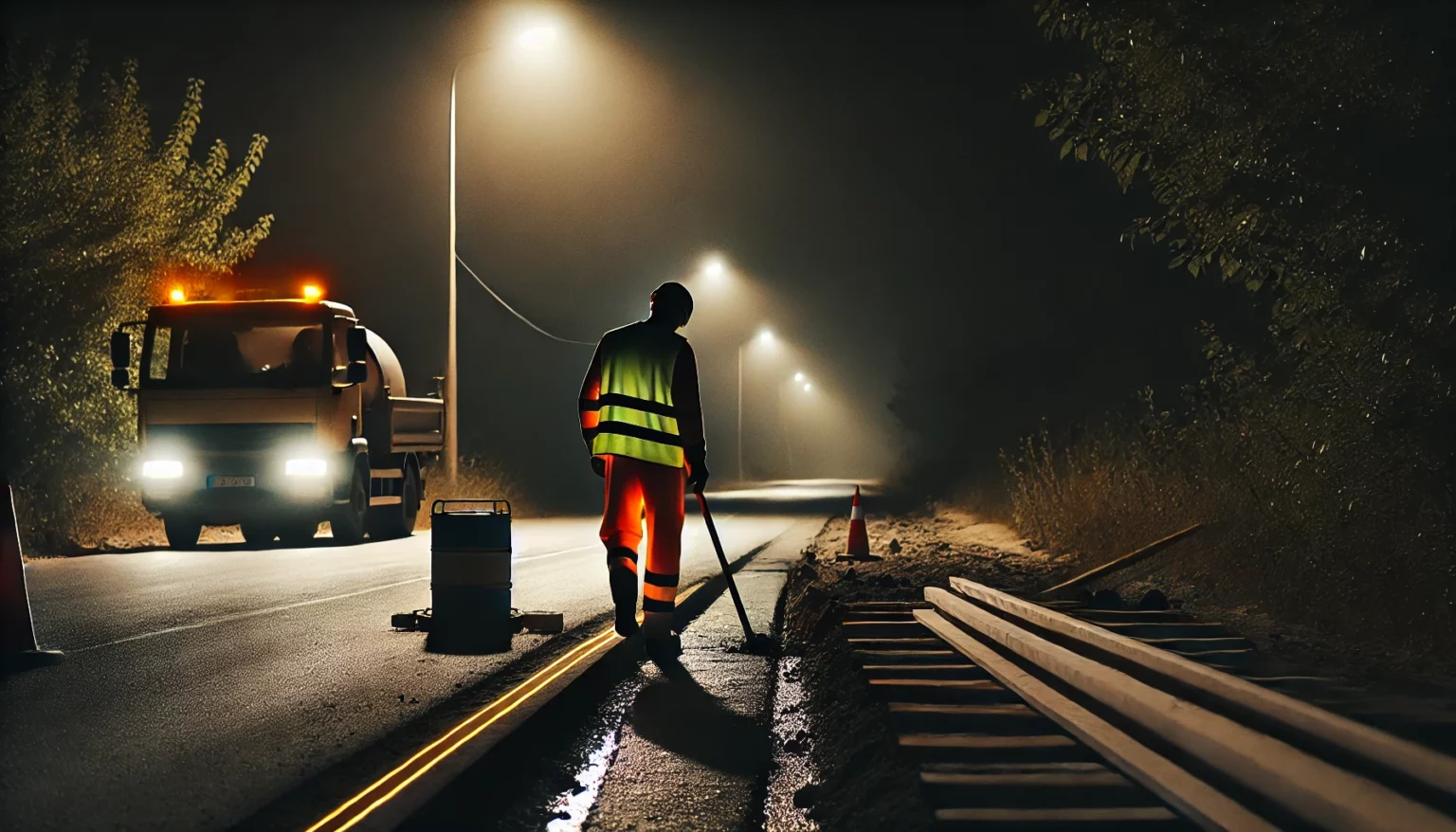Choosing the right material for your hi-vis pants is key to comfort, durability, and safety. In this guide, we’ll help you understand the best fabric options for your specific work environment, ensuring you stay visible and protected. By the end, you’ll know exactly which material suits your needs, and we’ll also provide tips on maintaining your gear for long-lasting performance. Let’s get started and find the perfect hi-vis pants for you!
For a broader understanding, refer to our main guide on how to choose the right hi-vis pants.
Common Materials Used in Hi-Vis Pants
1. Polyester
Polyester is a widely used material in high visibility pants due to its durability and color retention. It resists fading, making it ideal for long-term visibility.
Polyester’s lightweight properties also make it suitable for outdoor workers who require ease of movement and moisture resistance.
Common industries where polyester hi-vis pants are popular include construction, road maintenance, and logistics, where workers need durable, weather-resistant, and vibrant materials.
- Best for: Outdoor jobs where color vibrancy is essential.
- Advantages: Lightweight, quick-drying, and resistant to shrinking.
- Drawbacks: Can feel less breathable in hot climates.
2. Cotton
Cotton provides excellent comfort and breathability, making it a favorite for indoor or moderate-climate workers. This material’s soft texture ensures all-day comfort, especially for individuals engaged in extended hours of work.
- Best for: Jobs requiring extended wear.
- Advantages: Comfortable, hypoallergenic, and good for layering.
- Drawbacks: Less durable and prone to fading without treatment.
3. Poly-Cotton Blends
Combining the durability of polyester with the comfort of cotton, poly-cotton blends are versatile and practical. This blend maintains its structural integrity while offering improved airflow compared to pure polyester.
- Best for: Multi-purpose work environments.
- Advantages: Balanced durability and comfort, easy to maintain.
- Drawbacks: May lack specialized properties like fire resistance.
4. Flame-Resistant Fabrics
For industries dealing with fire or heat hazards, flame-resistant (FR) materials such as Nomex or treated cotton enable workers to operate safely and confidently in high-heat environments. These fabrics not only ensure safety but also provide peace of mind for workers in high-risk environments.
- Best for: Welding, construction, or oil and gas jobs.
- Advantages: Protects against heat and flames, complies with safety regulations.
- Drawbacks: Higher cost and may require specialized care.
Matching Materials to Work Conditions
Weather Conditions
- For wet or rainy environments, opt for waterproof materials like PU-coated polyester. These fabrics ensure you stay dry while maintaining high visibility.
- In cold climates, insulated or fleece-lined hi-vis pants are essential for warmth and comfort during extended outdoor shifts.
Hazard Exposure
- For chemical resistance, look for treated polyester blends or specialized fabrics designed for hazardous environments.
- Flame-resistant options are ideal for heat-exposed jobs, enabling safe and confident work while adhering to industry standards.
Daily Wear and Tear
- If durability is a priority, choose heavy-duty polyester or reinforced poly-cotton. These materials can handle rough handling and frequent washing.
- For casual or part-time use, lightweight materials like basic polyester or cotton suffice, ensuring comfort and visibility.
Standards and Certifications
European standards such as EN ISO 20471 ensure your reflective pants meet visibility and safety criteria. These standards cover aspects like the placement and size of reflective areas to maximize visibility. Familiarize yourself with these regulations when shopping for workwear.
EN ISO 20471 specifies requirements for high-visibility clothing, including the minimum size and placement of reflective strips, as well as the background material’s fluorescent properties.
These standards help workers remain confidently visible in all lighting conditions, ensuring optimal performance and safety. Learn more about EN Standards from this guide in Wikipedia.
Maintenance and Longevity
Proper care extends the lifespan of your reflective pants: In addition to saving costs, responsible maintenance also supports sustainability efforts.
For instance, washing at lower temperatures conserves energy, and using eco-friendly detergents minimizes harm to ecosystems.
Furthermore, selecting materials with higher durability reduces the need for frequent replacements, supporting sustainability.
- Polyester: Machine wash cold to prevent damage to reflective strips and preserve vibrancy.
- Cotton: Use mild detergents and avoid harsh chemicals to maintain softness and prevent fabric wear.
- Flame-Resistant Fabrics: Follow manufacturer instructions for cleaning to ensure safety properties remain intact.
Adding a maintenance routine tailored to your material choice can significantly prolong the usability of your hi-vis pants.
Complementary Workwear Options
For complete protection and visibility, consider pairing your hi-vis pants with complementary items that enhance safety and meet workplace requirements. For instance, safety vests and hi-vis jackets provide additional reflective areas, while cut-resistant gloves and safety shoes protect against specific hazards.
- Safety Vests: Learn more in our guide on how to choose the right safety vests.
- Hi-Vis Jackets: Read about selecting the right visibility gear here.
- Hi-Vis Overalls: Check our practical guide here.
- Cut Resistant Gloves: Ideal for tasks requiring hand protection without sacrificing dexterity.
- Safety Shoes: Ensure stability and foot protection during demanding tasks.
Conclusion
We hope this guide has helped you navigate the key factors in choosing the best material for your hi-vis pants, from fabric options to industry standards. Whether you’re working in construction, manufacturing, or any other demanding environment, we’re here to support your safety and comfort needs.
Explore our full range of high-visibility pants at Droppe, featuring trusted brands known for their quality and durability.
Have questions or need assistance in selecting the perfect pair? Feel free to reach out—we’re always here to ensure you make the best choice for your safety and performance on the job.
– The Droppe Team
Frequently Asked Questions
Polyester is lightweight and quick-drying, making it ideal for warm climates
Yes, look for pants with waterproof coatings like PU-coated polyester for wet conditions.
Ensure they comply with EN ISO 20471, which guarantees visibility and safety.
Yes, flame-resistant fabrics like Nomex are designed to protect against heat and flames, perfect for welding.
Machine wash cold for polyester, use mild detergent for cotton, and follow manufacturer instructions for flame-resistant materials.

















